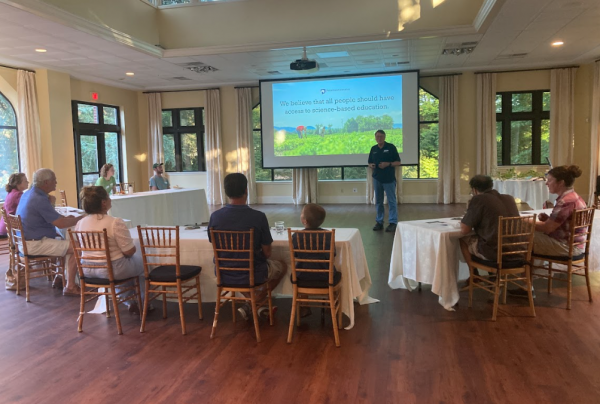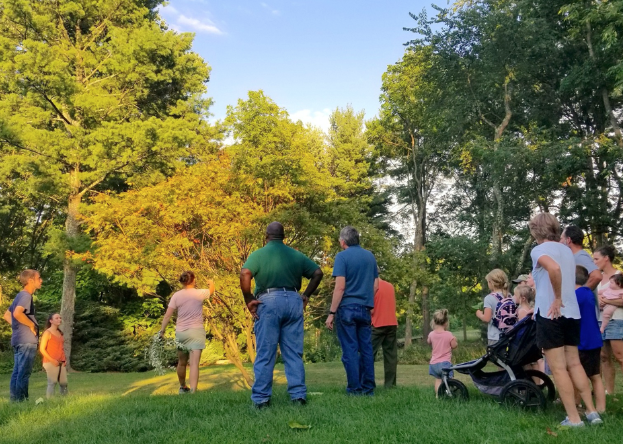Participants explore examples of local invasive plant species during our Meet & Eat class series. Photo courtesy of Heritage Conservancy.
Conservation easements are a strong land conservation tool in Heritage Conservancy’s toolbelt as a land trust, but the larger objectives of protecting regional biodiversity and combating climate change require proactive work beyond easements. That’s why Heritage Conservancy is so excited to be expanding our stewardship class offerings for landowners, especially owners of preserved lands.
In early August, Heritage Conservancy easement landowners joined Penn State Extension Master Watershed Stewards and The Art of Ecology to learn more about invasive species removal and foraging. From learning how to differentiate between multiflora rose and other native thorny plants, to discussing how to responsibly use pesticides, to tasting autumn olive berries and thinking about foraging as part of invasive species management, the three classes in the Invasive Species Meet & Eat Series were aimed at growing skills and creativity as a community of conservation-minded people.

Jim Walter of the Master Watershed Stewards shares a presentation. Photo courtesy of Heritage Conservancy.
Individuals interested in learning more about local invasive species can do so by downloading a plant ID app (INaturalist, Seek, etc.), surveying what you have on your property, and then checking out the Penn State Extension website, where there are profiles on most of the common invasive species in PA and recommendations about how to manage them. You can also find recipes that turn your unwanted invasive species into delicious food in Heritage Conservancy’s Nature Notes and in Art of Ecology’s blog.
One recipe example includes Autumn Olive-Rosehip Limeade, which makes use of two aggressive invaders: autumn olive and multiflora rose. By eating these shrubs’ fruiting bodies (aka the berries of the autumn olive and the rosehips of the multiflora rose), homeowners can prevent at least some of their seeds from being spread across the landscape.
Whether you own one acre or more than 100 acres, the more we know about the ecological communities around us and how we fit in, the more intentional we can be about how we influence those communities. Stay curious, stay connected. Together we can protect and adapt our natural heritage in a changing world.
Thank you to Jim Walter of the Master Watershed Stewards and Marissa Jacobs of Art of Ecology for sharing their wealth of knowledge with us! And thank you to PA American Water for sponsoring these classes!
For questions or more information, please contact Katie Toner, Heritage Conservancy Conservation Easement Steward, at ktoner@heritageconservancy.org.
